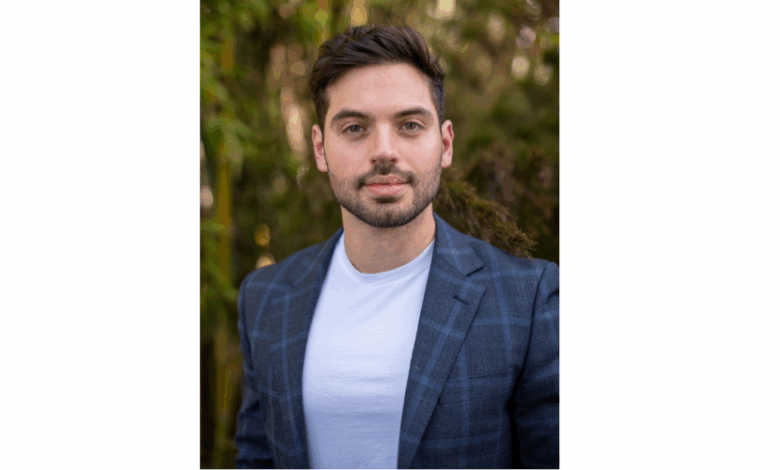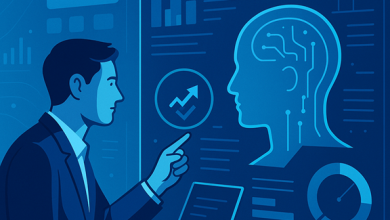
AI won’t “fix sleep.” But it can finally make sleep care scalable. I see billions of restless nights, a global clinician shortage, and a front door to sleep health that’s increasingly digital. The question is whether we can turn imperfect nightly data into clear, biologically plausible guidance – and know when to escalate to care.
Start with what’s changing. Consumer sleep technologies are becoming the de facto observatories of sleep, yet their accuracy relative to gold-standard polysomnography remains uneven. Recent performance evaluation studies illustrate both promise and caution. For instance, a 2024 study of Oura’s Gen3 staging algorithm reported encouraging agreement (~94% sensitivity, ~74% specificity), while some wrist-based trackers such as Garmin’s Vivosmart 3 underestimated overnight wakefulness by nearly 1 hour.
But that’s not a reason to dismiss them. It’s an opportunity to design device‑aware AI that understands each sensor’s strengths and blind spots, and calibrates with uncertainty‑aware interpretation.
The most important shift isn’t a new “sleep score”, it’s model design. Google’s Personal Health Large Language Model fine‑tunes a general LLM to read wearable time series, generate coaching insights, and even predict subjective sleep quality from longitudinal data. Results published in Nature Medicine show expert‑level domain performance and meaningful gains over base models for sleep tasks. That nudges AI toward what great clinicians do: read patterns, weigh trade‑offs, and explain next steps in plain language.
Meanwhile, Apple trained a wearable behavioral foundation model on 2.5B hours from 162K Apple Watch participants and evaluated it on 57 health tasks; it excelled on behavior-driven tasks like sleep and improved further when combined with a PPG (raw sensor) foundation model. That’s a practical signal to fuse weekly behavioral variables with physiology instead of choosing one.
From reactive dashboards to proactive forecasting. The next leap is anticipating “red nights” before they happen. New studies forecast next‑night sleep quality from recent behavior and physiology, and personal health large language models demonstrates the ability to predict self‑reported sleep outcomes, capabilities traditional trackers lack. Pairing these forecasts with context‑aware, language‑level nudges is how we move from charts to change.
Timing is the multiplier. Circadian (mis)timing drives health risk – even when total sleep time doesn’t budge. Forced‑desynchrony experiments and alignment/misalignment studies show circadian disruption independently impairs glucose tolerance and boosts insulin resistance, helping explain why shift work and social jetlag are associated with cardiometabolic burden. If coaching ignores light timing, meal timing, or other Zeitgebers (cues that influence our circadian rhythm), it misses the point.
What’s next on the AI roadmap for sleep and circadian health
1) Device‑aware interpretation layers. Calibrate to known error profiles (e.g., treat total sleep time differently than stage proportions when staging accuracy is modest), propagate uncertainty into the language of recommendations, and prioritize trends over cross-sectional snapshots.
2) Forecast‑to‑action loops. Warn users about potential “red nights” and auto‑compose small, circadian‑savvy plans (earlier dim‑down, morning light, cap naps before 2 p.m., shift workouts to avoid evening heat). Measure whether these micro‑plans reduce next‑night risk.
3) Just In Time Adaptive Intervention (JITAI) architecture under the hood. Encode decision points, tailoring variables, intervention options, and delivery rules; gate nudges on receptivity. Micro‑randomized trials are your R&D workhorse to optimize “what, when, and for whom” before full rollout.
4) Hybrid proactive + on-demand AI coaching. Combine proactive advice engines with on-demand chat to lower barriers for users unsure how to prompt. This model pushes tailored guidance automatically, while letting users ask questions when needed. Evaluations show LLMs can deliver largely accurate insomnia education, but limitations remain for more complex health tasks. A recent review also flagged inconsistent study quality, reinforcing the need for rigor, standardized methods, and longer-term trials.
5) Triage that respects clinical boundaries. Build sensitive risk‑estimation funnels for potential sleep disorders that route users to validated screens and clinical pathways – without pretending to diagnose. The AASM’s 2025 health advisory is clear: self‑assessment apps can’t confirm or rule out sleep apnea; escalation is essential.
Where AI stumbles. And how to avoid it. In hands‑on tests, general‑purpose models often (a) misinterpret metrics, (b) hallucinate trends from noisy time series, and (c) ignore circadian patterns. Guard against each with device‑aware prompts, validated analytic pipelines or statistical functions outside the LLM, and sequence‑aware models that see weekday‑weekend drift. Then monitor in production; accuracy at launch is not accuracy at month 6. The updated AASM AI position statement is blunt: AI should augment, not replace, clinical oversight – and programs must address privacy, fairness, infrastructure, and medico‑legal guardrails.
The arc I’m betting on. Measure → model → motivate → migrate. Measure what matters (duration, efficiency, timing, alertness, satisfaction, regularity). Model to attribute likely causes (behavior, environment) and forecast risk. Motivate with small, culturally aware content founded in principals of behavior change science. Migrate to clinical care when needed. Judge systems by whether they move people through that loop, night after night, without getting in the way.
Call to action. If you lead a consumer health platform or care delivery organization looking to integrate sleep (which you should for holistic health), update your roadmap now:
– Partner with sleep, circadian, and behavioral science experts to validate and de-risk content and claims.
– Treat models as device‑aware, confidence‑aware, and chronology‑aware by design.
– Build proactive, circadian‑savvy coaching that is evaluated with micro-randomized trials and long‑horizon outcomes.
– Keep clinicians in the loop, align with American Academy of Sleep Medicine’s guidance, and escalate early for suspected disorder.
– Instrument post‑deployment monitoring for drift, bias, and unintended effects.
Done well, AI won’t replace the art and science of sleep care. It will scale it. That’s how we trade dashboards for outcomes and move a tired world toward healthier, more regular nights.
AUTHOR
Dr. Elie Gottlieb is a sleep neuroscientist with over a decade of experience across industry and academia, including R&D roles at Johnson & Johnson, health-tech startups such as Sleep.ai, and clinical research institutes like the Florey Institute of Neuroscience. Dr. Gottlieb is currently the Head of Applied Sleep Science at Sleep.ai, where he guides global technology brands through the full R&D and product development lifecycle, creating continuous, proactive, and personalized digital health experiences. His research spans the use of big data to describe population sleep and circadian health, the assessment of digital sleep interventions, the validation of predictive AI tools for sleep disorder screening, and the role of sleep & circadian health in neurodegeneration.




